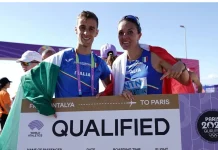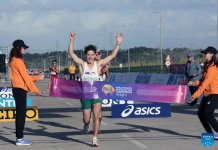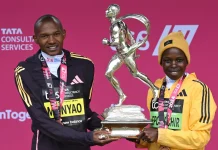A column by Len Johnson – Runner’s Tribe
Medals are not easy to get at world championships. Australia had to wait till the ninth day of the world championships to get an athlete to the medal ceremony, but when one medal finally arrived, like London’s famous red buses, another was not far behind.
Sally Pearson skimmed flawlessly over the 10 barriers to claim the title in the 100 metres hurdles, reprising the gold medal she had won in Daegu in 2011 and capping a triumphant return from the horrendous broken wrist which had wrecked her 2015 campaign and the hamstring tear which denied her the chance of defending her Olympic title in Rio de Janeiro.
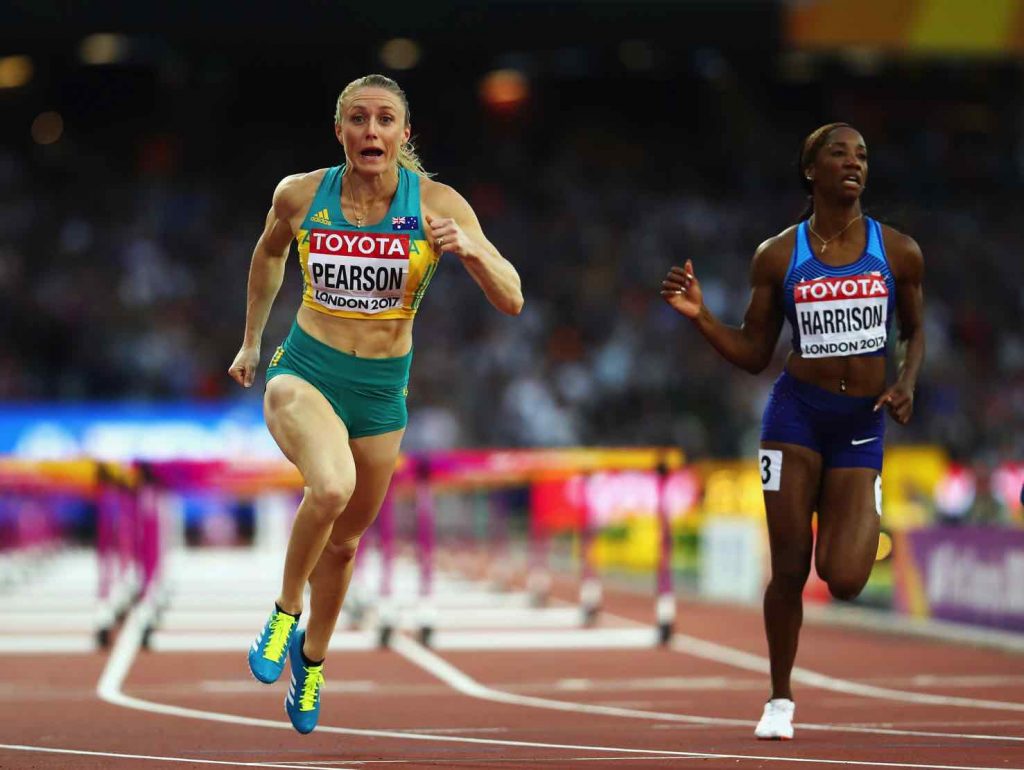
Barely 24 hours later, Dani Stevens launched her discus way out towards the 70-meter arc to take the silver medal. The implement landed just inside the junction of the arc with the sector-line, no doubt tweaking Stevens’ nerves a little before the judge raised a white flag and sending the butterflies of anxiety fluttering in Sandra Perkovic’s stomach until the measurement came up at 69.64. an Oceania record but short of the Croatian’s winning distance.
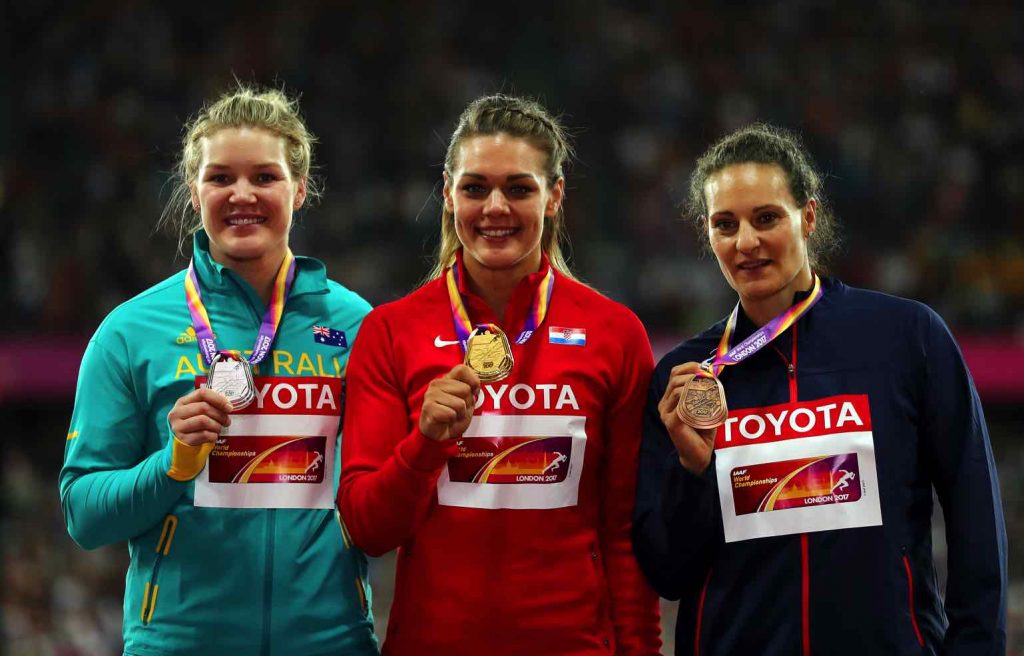
With Jared Tallent on the injury list, these were the only medals won by Australia in London. If only the one-a-day pattern had started a little earlier.
It is so fitting that Pearson and Stevens have won the medals. Along with Tallent, this pair have pretty well carried Australia as far as major championships and world rankings are concerned.
Pearson broke through first, with her silver medal at the Beijing 2008 Olympics. Stevens trumped this with a gold medal at the Berlin world championships the very next year, becoming the youngest-ever winner of the event at world or Olympic level.
From the next world championships on, however, it was Pearson who was at the very pinnacle of Australian performances. When she won at the world championships in Daegu in 2011, Pearson dragged the hurdles back into the fast zone. Her winning time of 12.28 was a championship record, the fastest time in the world for 19 years and the catalyst for a return to the days when sub-12.40 was required to take a major title win.
Then, of course, came that glorious night in London when Pearson went one better than Beijing to become an Olympic gold medallist. Despite an injury-marred preparation, Pearson took a silver medal behind Brianna Rollins at the 2013 world championships. But her major championships medal days seemed to be at an end when she missed Beijing and Rio in successive years. So much for perception!
Through the same period Stevens was going through what amounts to a slump. She remained a finalist, at times a medal contender, and continued to be ranked among the world’s top 10, but fell disappointingly short on the big occasions.
Rio 2016, as much as it was a disappointment, turned out to be a turning point. Stevens finished fourth in the Olympic final, but a medal – even the gold medal – was there for the taking as everyone, from gold medallist Perkovic down, struggled in both qualifying and the final.
Not so 2017, which has seen Stevens back at the top of her game, back among the medals, and performing at an amazing level of consistency.
The consistency of both Pearson and Stevens is certain to be reflected when Track & Field News releases its annual rankings over the Christmas-New Year period. After missing through injury the past two years, Pearson will certainly be among the top 10 in the hurdles, her ninth such appearance in the annual rankings. Her eight to date were consecutive from 2007 to 2014.
Stevens will do even better. A top-10 nod for her will be her tenth consecutive ranking among the world’s best 10. In that, if my trawl through the statistics did not miss anyone, she will join hurdles great – Pam Ryan (nee Kilborn) – who ranked ten years in a row in the 80 and then 100 metres hurdles.
Again unless I missed someone, this is the highest number of consecutive years in the 1op-10 by any Australian athlete. Assuming injury keeps Tallent out of the rankings, his string will end at nine, which remains the highest by an Australian male athlete.
Before leaving Stevens, let’s look at the way she dominated Oceania discus performances. Australia and New Zealand have had (at least) three great throwers – Beatrice Faumuina, the 1997 world champion for New Zealand, Daniela Costian, the former Romanian who migrated to Australia, and Stevens (honorable mention to Lisa-Marie Vizaniari here).
These three top the all-time Oceania performance list. All had long careers, but it is Stevens who comes to the fore when depth of performance is considered. She now has six of the top-10 all-time and 13 of the top 20.
Looking at some of the others with a significant number of consecutive appearances in the T&FN rankings, Cathy Freeman and Ron Clarke had eight, Raelene Boyle seven, and Betty Cuthbert five in a row out of a total of eight.
Some of these had two events. Clarke ranked in either the 5000 or 10,000 (and mostly, both) from 1963 to 1970. Freeman began with a top-10 in the 200 in 1993 and then ranked in the 400 every year from 1994 through to 2000. Boyle’s seven year run was in the 100, the 200, and mostly both. Tallent has had the 20k and 50k walks.
Only two medals, but there were many other top performances by Australians this year in London, Kampala, or elsewhere on the international circuit. Dane Bird-Smith walked his third PB in as many championships – World Wlaking Cup, Olympics, world champs) in London. PBs in championships are almost as hard to attain as medals.
Kurtis Marschall, Brooke Stratton, Jess Trengove and Kelsie-Lee Roberts were all London top 10s. Patrick Tiernan was 13th in the world cross-country and 11th in the world championships 5000 after making the move which busted the race open.
And a home Commonwealth Games to come in 2018. Bring it on, I say.
End
ABOUT THE AUTHOR
Len Johnson has been the Melbourne Age athletics writer for over 20 years, covering six Olympics, eleven world championships and six Commonwealth Games. He is also a former national-class distance runner. For over a decade Len has bee Runner’s Tribe’s lead columnist. Len also writes for IAAF. He has recently been named an Athletics Australia Lifetime Member. He is also the author of ‘The Landy Era’.



